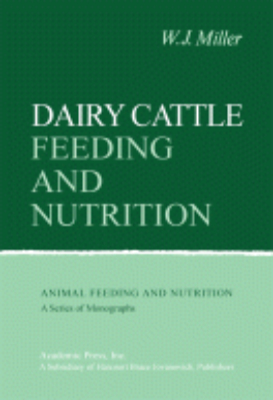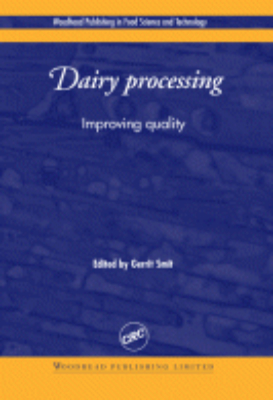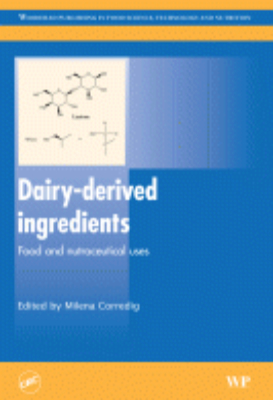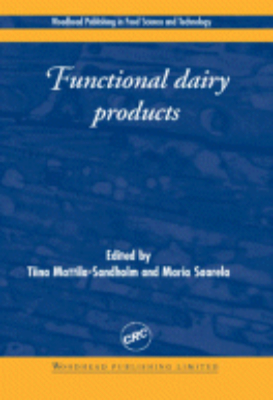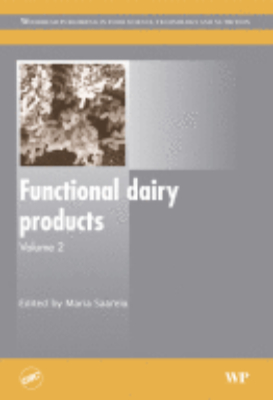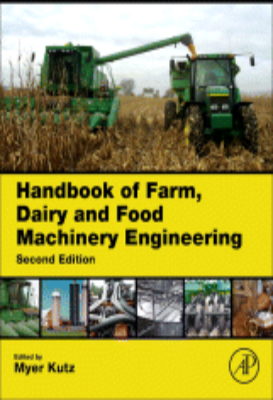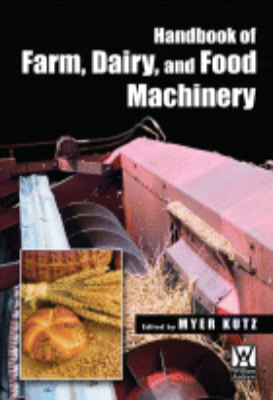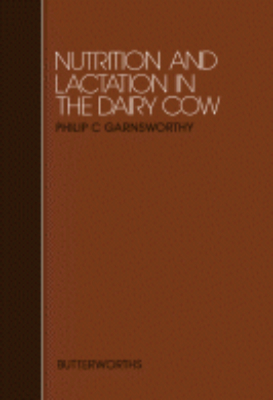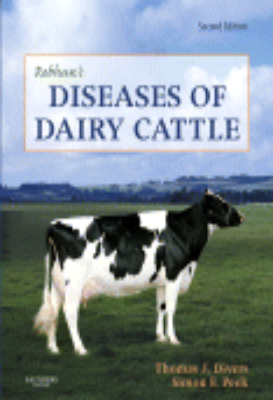E-Resources
Dairy Processing
The dairy sector continues to be at the forefront of innovation in food processing. With its distinguished editor and international team of contributors, Dairy processing: improving quality reviews key developments and their impact on product safety and quality.The first two chapters of part one provide a foundation for the rest of the book, summarising the latest research on the constituents of milk and reviewing how agricultural practice influences the quality of raw milk. This is followed by three chapters on key aspects of safety: good hygienic practice, improvements in pasteurisation and sterilisation, and the use of modelling to assess the effectiveness of pasteurisation. A final sequence of chapters in part one discuss aspects of product quality, from flavour, texture, shelf-life and authenticity to the increasingly important area of functional dairy products. Part two reviews some of the major technological advances in the sector. The first two chapters discuss developments in on-line control of process efficiency and product quality. They are followed by chapters on new technologies to improve qualities such as shelf-life, including high pressure processing, drying and the production of powdered dairy products, and the use of dissolved carbon dioxide to extend the shelf-life of milk. Part three looks in more detail at key advances in cheese manufacture.Dairy processing: improving quality is a standard reference for the dairy industry in improving process efficiency and product quality.
Dairy-Derived Ingredients
Advances in technologies for the extraction and modification of valuable milk components have opened up new opportunities for the food and nutraceutical industries. New applications for dairy ingredients are also being found. Dairy-derived ingredients reviews the latest research in these dynamic areas.Part one covers modern approaches to the separation of dairy components and manufacture of dairy ingredients. Part two focuses on the significant area of the biological functionality of dairy components and their nutraceutical applications, with chapters on milk oligosaccharides, lactoferrin and the role of dairy in food intake and metabolic regulation, among other topics. The final part of the book surveys the technological functionality of dairy components and their applications in food and non-food products. Dairy ingredients and food flavour, applications in emulsions, nanoemulsions and nanoencapsulation, and value-added ingredients from lactose are among the topics covered.With its distinguished editor and international team of contributors, Dairy-derived ingredients is an essential guide to new developments for the dairy and nutraceutical industries, as well as researchers in these fields.
Functional Dairy Products
Dairy products constitute one of the most important types of functional food. Edited by two of the leading authorities in the field, and with a distinguished international team of contributors, this major collection reviews the health benefits of functional dairy products, their ingredients and key product development issues. After an introductory survey of the various types of functional dairy product, part one discusses current research on the health benefits of functional dairy products, with chapters on cancer, coronary heart disease, osteoporosis, food allergy, immune function and gastrointestinal health. Part two reviews key dairy ingredients, their functional benefits and uses, covering caseinophosphopeptides, oligosaccharides, lactic acid bacteria and conjugated linoleic acid. Part three covers product development issues ranging from enhancing the functionality of prebiotics and probiotics to safety evaluation, consumer, market and research trends in this important sector. Functional dairy productsis a standard work for food manufacturers developing new dairy products and for all those researching functional foods.
Functional Dairy Products: Volume 2
Dairy products have a prominent position in the development of functional foods. As understanding of the health benefits of dairy products increases and consumer awareness of these health benefits grows, demand for new and improved functional dairy products is likely to rise. Functional dairy products: Volume 2 reviews the latest developments in the field and their industrial applications.Part one outlines the health benefits of functional dairy products and their applications in areas such as weight management, child health and gut health. The second part of the book discusses various ingredients used in functional dairy products such as pro- and prebiotics, hypoallergenic hydrolysates and plant sterols and stanols. The final part of the book considers aspects of product development such as biomarkers and experimental models to investigate health benefits, genomics of probiotic microorganisms and functional dairy product regulation and safety.With its distinguished editor and collection of international authors, Functional dairy products: Volume 2, together with its companion volume, provides professionals and researchers within the field with an invaluable reference.
Handbook of Farm, Dairy and Food Machinery Engineering
Handbook of Farm, Dairy and Food Machinery Engineering is the essential reference for engineers who need to understand those aspects of the food industry from farm machinery to food storage facilities to the machinery that processes and packages our foods. The process of getting food from "farm to fork," as the saying goes, involves more than planting, harvesting, shipping, processing, packaging and distributingthough those are all key components. Effective and efficient food delivery systems are built around processes that maximize the effort while minimizing cost, time, and resource depletion. This comprehensive reference is for engineers who design and build machinery and processing equipment, shipping containers, and packaging and storage equipment. It includes cutting-edge coverage of microwave vacuum application in grain processing, cacao processing, fruit and vegetable processing, ohmic heating of meat, facility design, closures for glass containers, double seaming, and much more.
Handbook of Farm, Dairy, and Food Machinery
Indispensable for food, chemical, mechanical, and packaging engineers, Handbook of Farm, Dairy, and Food Machinery covers in one comprehensive volume fundamental food engineering principles in the design of food industry machinery. The handbook provides broad, yet technically detailed coverage of food safety, regulations, product processing systems, packaging, facilities, waste management, and machinery design topics in a farm to the fork organization. The 22 chapters are contributed by leading experts worldwide with numerous illustrations, tables, and references. The book includes the new USDA regulations for certified organic processing, as well as state-of-the-art technologies for equipment both on the farm and in the plant.
Nutrition and Lactation in the Dairy Cow
Nutrition and Lactation in the Dairy Cow is the proceedings of the 46th University of Nottingham Easter School in Agricultural Science. Said symposium was concerned with the significant advances in the field of nutrition and lactation in the dairy cow. The book is divided in five parts. Part I deals with the principles behind nutrition and lactation of cows. Part II discusses the cows nutrient interactions; responses to nutrients that yield protein and energy; and the influence of nutrient balance and milk yields. Part III tackles the efficiency of energy utilization in cows and its relation to milk production. Part IV talks about food intake of cows and the factors that affect it, while Part V deals with the different feeding systems for cows. The text is recommended for those involved in raising cows and dairy production, especially those who would like to know more and make studies about the relationship of nutrition and lactation of cows.
Rebhun’s Diseases of Dairy Cattle
REBHUN'S DISEASES OF DAIRY CATTLE, 2nd Edition is your all-in-one guide to bovine disease management. With thorough, up-to-date coverage of differential diagnosis methods, surgical and therapeutic treatment options, and prevention strategies, it provides vital information for battling bovine diseases in both dairy and non-dairy cattle. The book is organized by body system for quick, convenient reference, and this new edition meets the growing need for management of both diseases of individual cows and problems affecting whole herds.

